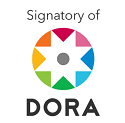Organizational climate of a control and telecommunications center
Abstract
The objective of the research is to analyze the organizational climate of a control and telecommunications center. The research was of non-experimental design, taking into account that the researchers did not manipulate the variable. The results showed that the organization does not take care to inform adequately about the regulations and operating rules, the staff does not assume responsibilities to generate satisfactory responses to the organization. There is an accentuated dissatisfaction with respect to the salary earned, in the same way, it can be deduced that the conflict indicator has a negative tendency, since the categories with the highest percentage were sometimes and almost never, this means that the workers of the organization studied are not able to assimilate divergent opinions In conclusion, the interpersonal and respectful relations between coworkers are not the best, the workers are not completely identified with the institution.
Downloads
References
Cuicas, D. (2016). Estrategias gerenciales orientadas a optimizar el clima organizacional de la Comandancia General de la Policía del Estado Falcón. (Tesis de maestría). Universidad Nacional Experimental Rafael María Baralt, Coro.
Fajardo, G., Almache, V., y Olaya, H. (2020). Clima organizacional en las instituciones de salud desde una perspectiva teórica. Revista Científica UISRAEL, 7(1), 153-164. https://doi.org/10.35290/rcui.v7n1.2020.200
Konntz, H., y Weihrich, H. (2004) Administración. Una perspectiva global. (12da ed.). México: McGraw - HILL Interamericana., S.A.
Litwin, G., y Stinger, H. (1968). Clima Organizacional, Editorial Simón & Schuster, Estados Unidos.
Mendoza, M., y Villafuerte, J. (2021). Evaluación de sistemas administrativos de recursos humanos: modelo Chiavenato aplicado a organizaciones productivas de Manabí, Ecuador. Revista de Investigación, Desarrollo e Innovación, 11(3), 467-478. https://n9.cl/e0gc0t
Newstrom, J. (2011). Comportamiento Humano en el trabajo. (12da ed.). México: McGraw-Hill/Interamericana.
Sein Myint, N. N., Kunaviktikul, W., & Stark, A. (2020). A contemporary understanding of organizational climate in healthcare setting: A concept analysis. Nursing fórum an independet voice for nursing, 5(1) 172-180. https://doi.org/10.1111/nuf.12513
Olaz, A., y Ortiz, P. (2022). Cómo lograr un buen clima laboral: diagnostico, medición y gestión para organizaciones. ESIC. https://n9.cl/yciua
Sánchez, R., y Pérez I. (2020). Clima organizacional y su abordaje en la salud pública cubana. Humanidades Médicas. Humanidades Médicas, 20(3), 689-711. https://n9.cl/1pn8y
Copyright (c) 2023 Marlín Greidi Castillo-López, Damil José Maldonado-Mosquera

This work is licensed under a Creative Commons Attribution-NonCommercial-ShareAlike 4.0 International License.
LICENCIA DE CONTENIDO
Creative Commons
Atribución-NoComercial-CompartirIgual 4.0 Internacional (CC BY-NC-SA 4.0)
Política propuesta para revistas que ofrecen acceso abierto
Aquellos autores/as que tengan publicaciones con esta revista, aceptan los términos siguientes:
Usted es libre de:
Compartir — copiar y redistribuir el material en cualquier medio o formato
Adaptar — remezclar, transformar y construir a partir del material
La licenciante no puede revocar estas libertades en tanto usted siga los términos de la licencia
Bajo los siguientes términos:
Atribución — Usted debe dar crédito de manera adecuada, brindar un enlace a la licencia, e indicar si se han realizado cambios. Puede hacerlo en cualquier forma razonable, pero no de forma tal que sugiera que usted o su uso tienen el apoyo de la licenciante.
NoComercial — Usted no puede hacer uso del material con propósitos comerciales.
CompartirIgual — Si remezcla, transforma o crea a partir del material, debe distribuir su contribución bajo la lamisma licencia del original.
No hay restricciones adicionales — No puede aplicar términos legales ni medidas tecnológicas que restrinjan legalmente a otras a hacer cualquier uso permitido por la licencia.
DERECHOS DE AUTOR Y PERMISO
La revista permite que los autores tengan los derechos de autor sin restricciones.
La revista permite que los autores conserven los derechos de publicación sin restricciones; y garantizan a la revista el derecho de ser la primera publicación del trabajo.


















